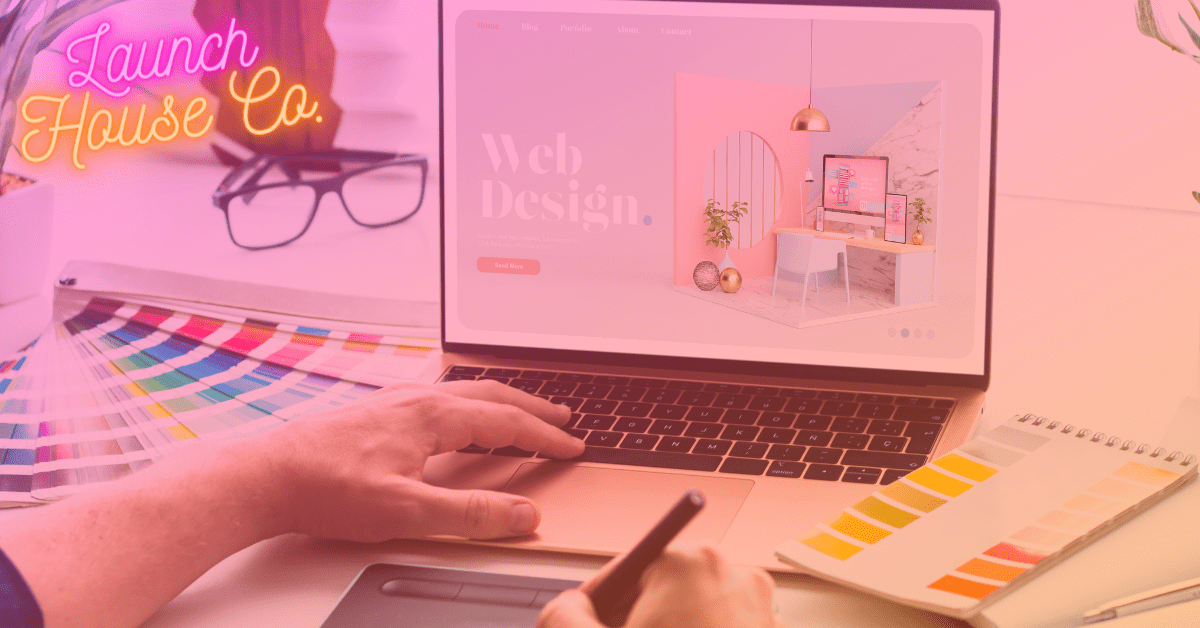In today’s digital landscape, the competition for a customer’s attention has never been fiercer. With countless businesses vying for a spot in the limelight, mere online presence isn’t enough. This is where the significance of sales funnel design optimization comes into play. An optimized sales funnel design is not just about driving traffic; it’s about guiding that traffic purposefully, converting casual browsers into dedicated buyers.
But what drives this transformation? Design.
Design, often underestimated, is the silent influencer of the digital world. Think of it as the symphony that plays in the background, subtly setting the mood, rhythm, and pace. When done right, it doesn’t just “look good” – it serves a purpose. It persuades, guides, and sometimes even compels.
A strategic sales funnel design caters to the psychological triggers of visitors, leading them effortlessly from one stage of the buying process to the next. It’s the delicate balance between aesthetics and functionality, ensuring that every click, every scroll, and every hover aligns with the end goal – conversion.

The Psychology Behind a Sale:
Have you ever wondered why certain products in a store catch your eye while others remain unnoticed? Or why do you impulsively buy items not on your shopping list online? This isn’t a coincidence; it’s the power of design working with psychology.
1. Tapping into Human Behavior and Decision-making:
Human behavior, especially in the realm of purchasing, isn’t arbitrary. It follows patterns that have been studied and understood over time. Design, when employed correctly, can navigate these patterns, guiding users subconsciously toward the desired outcome. Color schemes, for example, can evoke particular emotions.
While blue often radiates trust and stability (think about the typical blue hues of banks and corporate websites), red can incite excitement and urgency. Read this article to learn more about color psychology.
Layout, on the other hand, can direct a user’s gaze. This understanding results from the ‘Golden Triangle’ principle in web design — where the viewer’s eyes primarily focus on the top and left of a page. Designers can significantly influence decision-making by placing essential elements, such as call-to-actions, within these high-attention areas.

2. Building Trust:
Trust is the foundation of any successful transaction. In the digital realm, where face-to-face interactions are non-existent, design plays a pivotal role in building this trust. Credible testimonials, badges of secure payment gateways, and recognizable certification logos (like SSL certificates) placed prominently can reassure users. Furthermore, a professional, cohesive, and well-thought-out design naturally feels more trustworthy than a haphazard or outdated one.
3. Clarity is King:
In the vast expanse of the internet, users are often overwhelmed with information. If your sales funnel design isn’t clear, you risk losing potential customers. Design helps by prioritizing information, making navigation intuitive, and ensuring call-to-actions stand out. Clear, concise, compelling copy and relevant and attention-grabbing visuals can guide visitors smoothly down the sales funnel.
4. Instilling a Sense of Urgency:
Have you ever seen those “Only 2 items left!” or “Sale ends in 3 hours!” banners and felt an immediate need to act? That’s design leveraging the psychological principle of scarcity. When humans believe something is in short supply, they tend to want it more — fearing they might miss out.
Strategic design elements like countdown timers, limited stock indicators, and flashing banners can create this urgency, nudging visitors toward a purchase.
In essence, understanding the psychological intricacies of a sale and aligning them with design can transform your sales funnel design from a mere pathway into a powerful conduit for conversions.

Critical Elements of an Optimized Sales Funnel Design:
The journey from a visitor’s first click to the final purchase in the digital marketplace often feels like navigating through a labyrinth. However, with a well-optimized sales funnel design, this journey can be as smooth as a walk in the park. Let’s dive into the pivotal elements that make this possible:
1. Landing Pages:
The ‘first handshake’ of the digital realm, your landing page, sets the tone for every interaction after.
- Importance of the First Impression: You only get one shot at making a first impression. A well-crafted landing page can build trust, pique interest, and encourage exploration. It’s not merely about aesthetics but also about presenting your value proposition front and center.
- Keeping it Simple and Clear: Overloading your landing page with excessive information or graphics can be counterproductive. Aim for clarity and simplicity. Let your visitors know who you are, what you offer, and how it can concisely benefit them.
- Ensuring Fast Loading Times: Every second counts in an era of dwindling attention spans. Slow-loading pages can deter potential customers. Prioritize optimizing images, utilizing content delivery networks, and minimizing unnecessary code to ensure your page loads swiftly. Shoot for under three seconds to load.

2. Calls-to-Action (CTAs):
Your CTAs serve as beacons, guiding visitors through the sales funnel design and prompting them to take action.
- Making Them Stand Out but Not Overwhelming: Your CTAs should be prominent but not obtrusive. Use contrasting colors to make them pop, but ensure they align with your overall design aesthetic.
- Using Persuasive, Action-driven Text: “Buy Now,” “Learn More,” and “Get Started” — these are all examples of compelling CTAs. The key is to be precise, persuasive, and clear about the action you want the visitor to take.
- Positioning CTAs Strategically Throughout the Site: Don’t just relegate your CTAs to the bottom of the page. Position them at intervals, ensuring they appear whenever a visitor might feel compelled to act. You should A/B test button appearance on the page, but more about that later!
3. Seamless User Flows:
The path from the landing page to conversion should feel intuitive and frictionless.
- Minimizing the Number of Steps to Conversion: Each additional step can be a potential drop-off point. Streamline the process. For instance, reduce the number of form fields or employ a one-click purchase option where possible.
- Using Clear and Intuitive Navigation: Whether a simple menu bar or a breadcrumb trail, ensure users always know where they are and how to proceed.
- Ensuring Compatibility Across Devices: In today’s multi-device world, your sales funnel design should provide a consistent experience whether a visitor is on a desktop, mobile, or tablet. Implement responsive design practices and regularly test across various devices to ensure seamless transitions.
By intricately weaving these elements into your sales funnel, you’ll be better poised to guide your visitors toward conversion, turning browsers into loyal customers.

Visual Aesthetics and Trust:
In the digital realm, appearances aren’t just superficial but foundational. The design of your website or platform speaks volumes before a single word is read or a product is explored. A clean, professional design fosters trust, while a cluttered or outdated one can send potential customers running. But how exactly does design intertwine with confidence?
Let’s delve deeper:
- Importance of Professional, Cohesive Design:
- First Impressions Matter: Visitors form an opinion about your site in seconds. A polished, modern design ensures that this initial judgment is fantastic.
- Consistency is Key: Consistent fonts, color schemes, and layouts across all pages enhance the user experience and exude professionalism. It subtly communicates that you pay attention to details and are reliable.
- Reflecting Brand Identity: Your design should be an extension of your brand’s identity, ethos, and values. When visitors see a cohesive brand story, from the logo to the landing page, they’re more likely to trust the authenticity of your business. Read this article to learn more about brand identities!
- Utilizing Trust Signals:
- Testimonials: Genuine testimonials from satisfied customers can work wonders. They provide social proof that others have used your product or service and have had positive experiences. Featuring these prominently can assuage potential concerns or hesitations new visitors might have.
- Reviews: Similar to testimonials, reviews often provide a more comprehensive view of a product or service. By allowing for positive and negative reviews (and actively addressing the latter), you showcase transparency—a vital component of trust.
- Secure Payment Badges: In an era of frequent data breaches, online shoppers are more cautious than ever. Displaying badges from trusted payment processors or security firms signifies that their financial information is safe with you. Such badges include SSL certificates, payment gateways like PayPal or Stripe, and security seals from organizations like McAfee or VeriSign.
Trust isn’t merely about what you say—it’s about what you show and how you present it. A harmonious blend of visual aesthetics with trust signals can significantly elevate the perceived credibility of your website, ensuring visitors feel confident in doing business with you.

User Experience (UX) and Conversions:
User Experience (UX) is the heart and soul of any digital platform. It dictates how users interact with your website, their ease of navigation, and, most importantly, their likelihood of converting from mere visitors to loyal customers. Prioritizing UX is equivalent to prioritizing your business’s success.
Here’s why:
a. Page Speed:
- Impact of Loading Times on Bounce Rates: Studies have shown that even a second’s delay in page load time can significantly increase bounce rates. In today’s fast-paced world, users expect instantaneous results. If your page takes too long to load, they’re more likely to abandon it, costing you potential sales. As I said above, shoot for under three seconds to load.
- Tips for Optimizing Images and Scripts:
- Compress Images: Tools like TinyPNG or Compressor.io can reduce image file sizes without compromising quality.
- Minimize JS and CSS: Minifying scripts can significantly speed up page load times. Tools like UglifyJS or CSSNano can assist with this.
- Use Content Delivery Networks (CDN): CDNs can host and serve your website’s files from multiple locations, ensuring faster delivery to users worldwide.
- Use a Cache Plugin: Use a cache plugin like WP Fastest Cache to help speed up your WordPress website easily! They have a paid and free version to match any budget.

b. Mobile Optimization:
- Growing Importance of Mobile Shopping: With over half of all global web traffic coming from mobile devices, mobile optimization isn’t just a luxury—it’s a necessity. Users now expect to shop, browse, and interact with content seamlessly on their mobile devices.
- Ensuring Responsive Design: A responsive design ensures your website adjusts and displays content appropriately on all devices, from desktops to smartphones. This means easy readability, intuitive navigation, and smooth interactions regardless of screen size. Using a page builder like Elementor makes it easy to keep a design responsive without code!
c. Avoiding Common Design Pitfalls:
- Overloading with Information: While it’s tempting to showcase everything you offer, an overcrowded page can be overwhelming for visitors. Stick to essential information, use whitespace effectively, and prioritize content that guides users toward conversion.
- Confusing Navigation: If users can’t easily find what they’re looking for, they’ll leave. Ensure your site’s navigation is intuitive, with clear labels and a logical structure.
- Hidden Fees or Unexpected Costs: Nothing deters a potential sale faster than unexpected costs at the last minute. Be transparent about all fees, taxes, and shipping costs from the get-go. If users feel deceived, they’re not just less likely to buy—they’re less likely to trust your brand in the future. It might be best to include shipping in the product’s price to remove sticker shock at checkout. Thank you, Amazon for this expectation.
Optimizing the user experience is about respecting your visitors’ time and needs. By ensuring fast load times, mobile-friendliness, and a straightforward, intuitive design, you pave the way for higher conversion rates and, ultimately, increased revenue.

Testing and Iteration:
The landscape of e-commerce and online businesses is dynamic and ever-evolving. What worked yesterday might not necessarily work tomorrow. That’s why refinement through testing and iteration is crucial instead of resting on your laurels once a design is in place. I told you we would get back to A/B testing!
Here’s why and how:
- Importance of A/B Testing in Funnel Design:
- What is A/B Testing? At its core, A/B testing involves presenting two variations of a design element (Version A and Version B) to different segments of your audience to determine which one is more effective in driving the desired outcome, such as clicks, sign-ups, or purchases.
- Why It’s Essential: A/B testing provides a quantifiable way to validate changes and updates to your sales funnel design. Instead of relying on hunches or assumptions, A/B testing offers clear, data-driven insights into what truly resonates with your audience. This can lead to increased conversion rates, improved user satisfaction, and maximized ROI.
- Gathering Feedback:
- Direct User Feedback: Tools like surveys, feedback forms, and candid interviews can offer invaluable insights into user behavior and preferences. For instance, if users are dropping off at a particular stage in your funnel, they can provide direct reasons why.
- Analytical Feedback: Utilize analytics platforms like Google Analytics, Hotjar, or Mixpanel. These tools can provide heat maps, user journey tracking, and drop-off points, painting a comprehensive picture of user behavior on your site.
- Making Data-Informed Decisions:
- Actionable Insights: Once you have data from A/B tests and feedback tools, the next step is to interpret it. Look for patterns, recurring pain points, or standout preferences. These insights are actionable; they inform tweaks, overhauls, or even minor changes to your funnel design.
- Iterative Process: The key to successful funnel optimization is understanding that it’s an ongoing, iterative process. Trends change, user preferences evolve, and new tools emerge. By regularly testing, gathering feedback, and iterating, you ensure that your sales funnel design remains optimized and effective in the long run.
In conclusion, the road to a highly optimized sales funnel design is not a one-off sprint but a continuous marathon. It’s about being adaptive, responsive, and, above all, data-driven in your approach. You can refine your funnel to its highest potential through testing and iteration.

Real-world Examples:
The world of e-commerce and online business is teeming with success stories. Behind these stories are meticulously crafted design choices that have played a significant role in driving conversions.
Let’s explore a few examples to see how they’ve optimized their sales funnels through intelligent design strategies.

- Apple:
- Design Choices: Sleek, minimalist design with high-quality images of their products front and center.
- Strategies Employed: Apple’s website is a masterclass in simplicity and clarity. Each product page is meticulously designed to focus on the product’s features, benefits, and aesthetics. The CTAs are subtly placed yet attention-grabbing, ensuring users are guided smoothly through their purchasing journey. Moreover, their use of white space and typography reinforces their brand’s premium feel, establishing trust and desirability.

- Airbnb:
- Design Choices: User-friendly interface with a strong visual emphasis, showcasing properties through high-quality photos.
- Strategies Employed: Airbnb understands the importance of trust. Their website design incorporates host profiles with real photos and reviews, creating a sense of community and trustworthiness. The search and booking process is streamlined, with intuitive filters and clear CTAs. Personalized recommendations based on user behavior and preferences make for an even smoother user experience.

- Nike:
- Design Choices: Dynamic, engaging visuals complemented by concise, motivational copy.
- Strategies Employed: Nike’s website uses captivating imagery and videos to engage its visitors immediately and show an active/movement-based lifestyle. The design is not just about showcasing products but also telling a story and evoking emotion. Their product pages have clear CTAs, and the checkout process is quick and hassle-free. Nike also effectively employs upselling by showing related products or accessories.

- Zappos:
- Design Choices: Detailed product listings with multiple images, user reviews, and straightforward, easy navigation.
- Strategies Employed: Zappos, a giant in the online shoe retail space, understands buyers’ concerns about purchasing shoes online. Their design strategy involves providing as much information as possible – from 360-degree product views to user reviews and videos. Their easy return policy is highlighted, reducing purchase hesitancy and building trust.

- Duolingo:
- Design Choices: Fun, colorful design with intuitive user flows.
- Strategies Employed: Duolingo’s design is centered on gamification and user engagement. The onboarding process is simple, and users are immediately immersed in short, interactive lessons. Progress trackers, daily streaks, and badges keep users motivated. Every design choice, from the color palette to the playful owl mascot, works together to create an engaging, positive user experience.
In sum, each of these successful brands has harnessed the power of sales funnel design in unique ways, but a common thread among them is a deep understanding of their audience. Their design strategies showcase their products or services effectively and foster trust, engagement, and, ultimately, conversion. They serve as inspiring benchmarks for optimizing their sales funnel design.

Countless businesses vie for a consumer’s attention, your sales funnel design isn’t just an afterthought – it’s a pivotal component of your success. As we’ve explored in this article, thoughtful design isn’t about aesthetics.
It’s about crafting a journey that persuades, guides, and ultimately converts potential customers. It’s about harnessing human decision-making’s psychological and behavioral nuances to push them gently, yet confidently, toward a purchase.
As entrepreneurs and business owners, it’s essential to perpetually evaluate and adjust our funnels. Are your CTAs clear and compelling? Does your website’s design inspire trust and confidence? Are there hiccups in the user flow that might be causing friction? Every design element plays a role, and recognizing its significance can make the difference between a fleeting visitor and a loyal customer.
If you found this deep dive into the power of design intriguing, you’ll appreciate understanding the more subtle nuances of design and psychology. Color, for instance, isn’t just about what looks good; it evokes emotions, drives perceptions, and can significantly influence user actions.
Dive deeper into this fascinating topic in my next article: “The Incredible Impact of Color Psychology in Branding and Web Design for Business.” A whole palette of knowledge awaits you, promising to paint your business strategies in hues of success!
